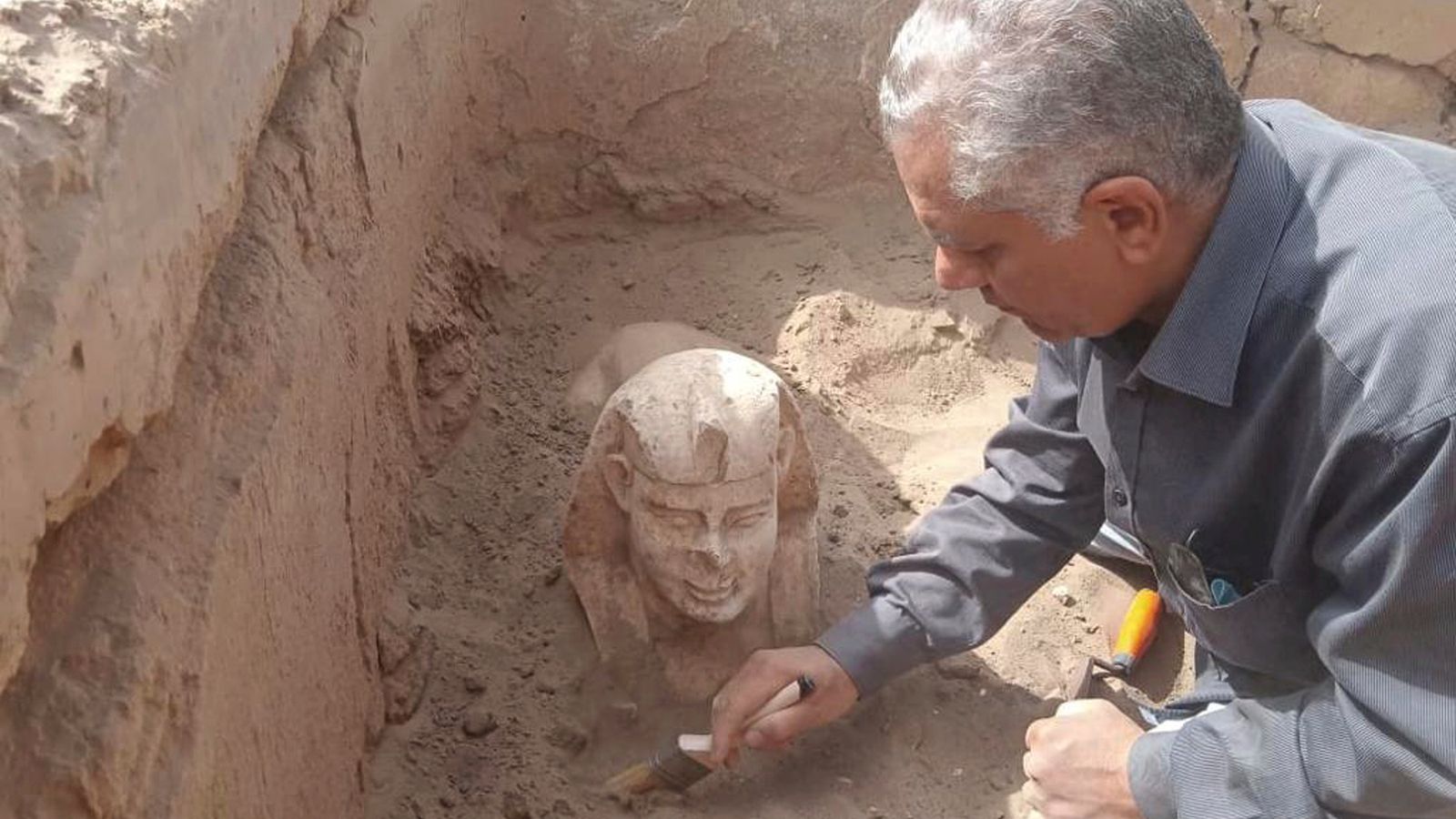Archaeologists in Egypt unearth Sphinx-like statue and shrine
The statue is reminiscent of the well-known Sphinx in the Pyramids of Giza complex, and archaeologists believe the new discovery’s smiling features may belong to the Roman emperor Claudius.
Tuesday 7 March 2023 00:47, UK
Pic: Egyptian Ministry of Tourism and Antiquities/AP
Image:
The statue was uncovered at an archaeological site in Qena. Pic: Egyptian Ministry of Tourism and Antiquities/AP
Why you can trust Sky News
Archaeologists have unearthed a Sphinx-like statue and the remains of a shrine in an ancient temple in southern Egypt.
The artefacts were found in the temple of Dendera in Qena Province, 280 miles south of the capital of Cairo, Egypt’s antiquities ministry revealed.
Archaeologists believe the statue’s smiling features may belong to the Roman emperor Claudius, who extended Rome’s rule into North Africa between 41 and 54 AD, the ministry added.
The smaller statue is reminiscent of the well-known Sphinx in the Pyramids of Giza complex, which is 66ft high.
A sphinx statue believed to be made in the likeness of a Roman emperor is uncovered from an archaeological site in Qena, Egypt. Pic: Egyptian Ministry of Tourism and Antiquities/AP
Image:
Pic: Egyptian Ministry of Tourism and Antiquities
More studies will be conducted on the markings on the stone slab by archaeologists, which could reveal more information about the smaller statue’s identity and the area.
The archaeologists also found a tablet dating to Ancient Roman times with demotic and hieroglyphic inscriptions.
Read more:
4,500-year-old chamber discovered inside Great Pyramid
Rare footage shows ‘haunting’ dives to Titanic wreck after discovery
A tablet dating to Ancient Roman times written in Hieroglyphics and Demotic was uncovered from an archaeological site where a sphinx statue was discovered. Pic: Egyptian Ministry of Tourism and Antiquities/AP
Image:
Pic: Egyptian Ministry of Tourism and Antiquities/AP
The limestone shrine includes a two-layer platform and a mud-brick basin from the Byzantine era, the ministry said.
Such discoveries are usually touted by the Egyptian government in hopes of attracting more tourists, a significant source of foreign currency for the North African country.
Related Topics
Egypt






























